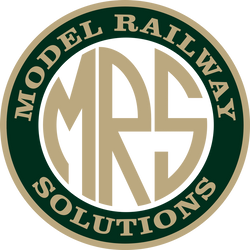
HMRS / Pressfix - PX16P LNWR Loco, Coach and Wagon Transfers - 4mm Scale
LOCOMOTIVES: Coat of arms (with blue ribbon, large size) used on leading splashers of passenger tender engines from about 1877 and on cab or bunker sides of some passenger tank locos. 'Precursor' 4-4-2 tanks lettered L&NWR on tank sides with coat of arms above. 4-6-2 tanks lettered LNWR with coat of arms on upper cabside. These 1etters also used on 0-8-2 tanks. Small coat of arms (blue ribbon) on centre splashers of 'Cauliflower' 0-6-2's. COACHES ??? LNWR Ordinary stock used black outlined yellow lettering at waist level - the class in the door waist panel ('Second' abolished 1912) and the number near each end. 'Guard' used on single guards' doors. Block letters L&NWR in waist panels of guards' lookouts if at the centre of the vehicle but not at the end, and on upper panels of TPO's and some parcel vans, often with 'No' prefix to number. Coat of arms (red ribbon) in lower panels, twice each side, with monogram LNWR once or twice aside until about 1910. 'Driver' and 'Luggage' for motor fitted stock. 'A suffix used on some duplicate list nos. 'E' is prefix for electric stock nos. 'Smoking' labels when used applied inside windows to right of doors. Saloon and special stock used black/red/white shaded lettering. The large serif style is for early vehicles lettered and numbered along the eaves panel - the smaller block style is for later vehicles marked along the waist. Coats of arms and monograms used in lower panels as on ordinary stock.
COACHES: WCJS These carried insignia arranged as on LNWR vehicles, but using the green shaded lettering with the WCJS monogram and coat of arms (red and green base). Second class on WCJWS abolished in 1893. Vans such as Fish or Fruit and Milk (LNWR or WCJS) were lettered in the lower panels with the number once only above the lettering, with monogram but not coats of arms.
GOODS WAGONS: Until 1908, company ownership was shown only by two white diamonds per side. The smaller size was used on very low sided wagons, e.g. twin timber trucks (which also had diamonds on either side of the bolsters). Tare weight shown as e.g. 4.18.2 at bottom of solebar above left hand axleguard in smallest size (2???") nos. Wagon number on sides normally only as a cast iron plate (except cattle trucks), but repeated on ends in second size (4") nos. After 1908 company letters LNWR introduced (size to suit vehicle). The painting of diamonds ceased about 1915. Many coal wagons lettered e.g. 8 TONS COAL WAGON along top, plank. Tonnages also shown e.g. 6 TONS on some covered and open goods wagons. Brake vans lettered with depot or service (e.g. BUXTON, or CREWE & CARLISLE) on first plank above bottom rail of side. Ballast wagons usually lettered with division lettering (e.g. SD, NWD, ED etc.,) in 15" or 12" letters. Black lettering is for white painted refrigerator vans. These notes can give only general guidance, so please bear in mind the many variations, especially on goods stock, and work to photographs where possible. Remember that styles often continued in service many years after the official date of change.
